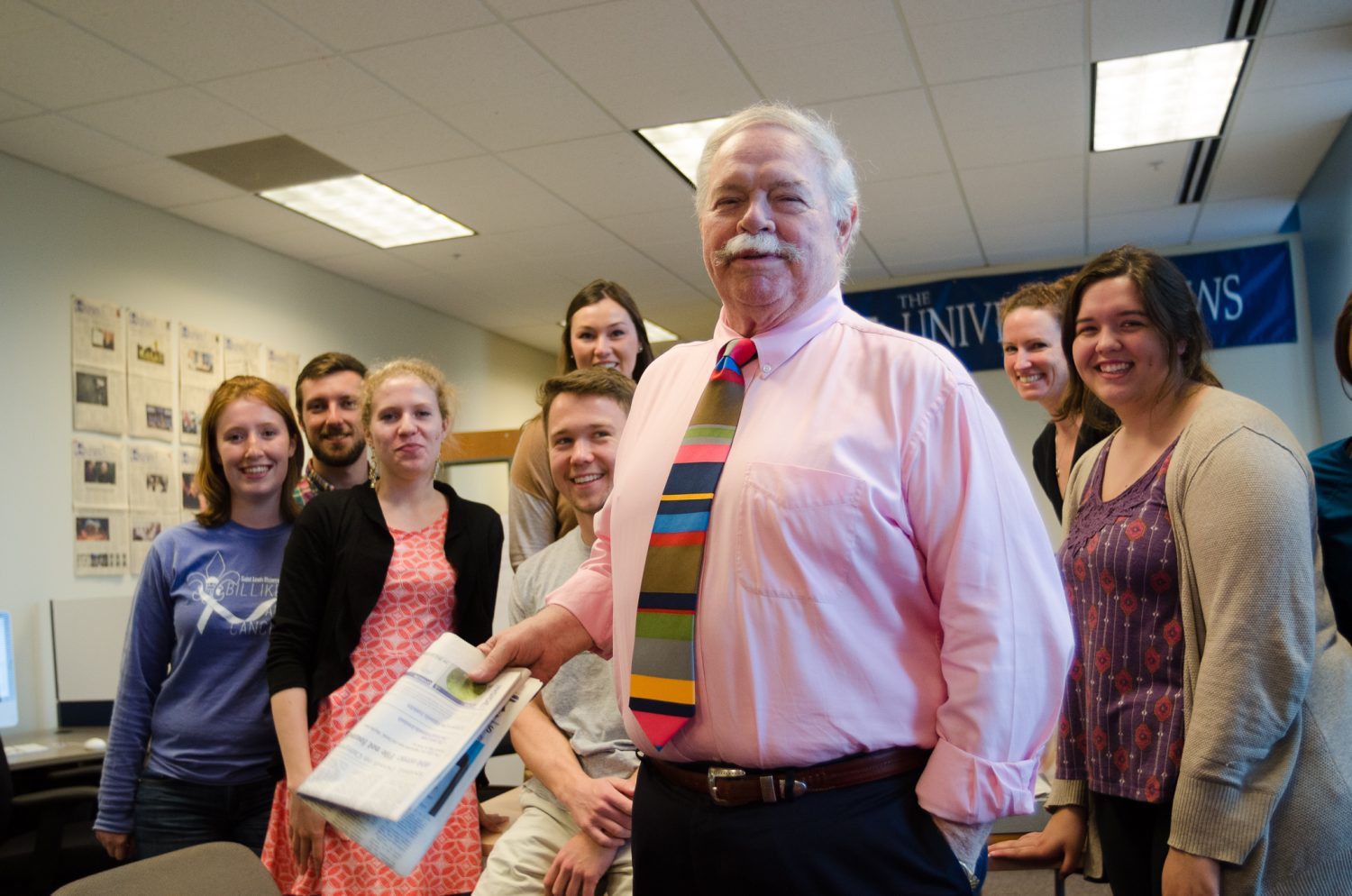The offices of Air Force Reserve Officer Training Corps at Saint Louis University used to be held in winding corridors in the subbasement of the Busch Memorial Center.
You may remember the small blue sign near the BMC’s basement door that announced Detachment 207’s existence–but most SLU students never wandered into that entrance.
It was home base, however, for nearly 200 cadets whose educations at SLU include training to be officers in the Air Force. The detachment’s new location on Forest Park Parkway, nestled behind the Shell station on Grand Boulevard, is just as inconspicuous as its previous location. Its squat, mustard-colored brick walls make it blend in with the rest of the industrial grime on the south perimeter of the Frost campus.
Despite its homely fa?ade, however, the interior is polished. “We have four times as much space here,” said Lt. Col. Julie Delespesse. “We love it.”
It is SLU’s property, and they have spruced it up with new carpet and window treatments. “In the military, it’s a treat to have a window,” said Delespesse. There are more windows and a private parking lot out front.
The row of offices includes space for an admissions assistant, Capt. John Myers, and professors of aerospace engineering Major John Bosworth and Capt. Robert Hume. Photos of fighter planes adorn each wall, along with a spectrum of blue shades of, well, everything, from the uniforms to the carpet.
Delespesse explained that SLU is host to the detachment that draws from local colleges and universities (called cross-towns) like Southern Illinois University-Edwardsville, Webster University and Washington University.
The ROTC students at SLU are not yet enlisted, but there are a few enlisted officers who work at the detachment–Delespesse called them “worker bees”–for three or four years at a time.
The back room is a spacious lounge for the cadets, furnished with a television and crimson felt-covered pool table.
Delespesse pointed out the kitchenette where she and her colleagues eat healthy lunches. She emphasized how important it is that all members of the Air Force maintain physical fitness.
Emblems adorn the walls of the lounge, including that of Park’s Guard and Arnold Air Society. The precision drill team, PG is a rigorous organization that competes nationwide and serves color-guard duty at local official ceremonies. The members of AAS–the sorority/fraternity–do community service as well as social activities.
Delespesse estimated that about one third of the students in ROTC participate in these organizations. “We don’t want them to be so involved in extra-curriculars that their grades suffer.”
SLU is one of only three universities in the country that matches ROTC scholarships. If a student gets an ROTC scholarship, SLU will cover the rest of the student’s costs. Seventy-five percent of those scholarships go to technical majors, the rest go to non-tech. Delespesse said that in the future, demand for technical majors will rise even more.
The history of ROTC at SLU is about 15 years old–they were previously located at Parks College. Delespesse has traveled the world with the Air Force and has been stationed in Belgium, Turkey and Panama.
She said the best thing about working at the detachment is “helping young people toward their goals and making sure the right people get into the Air Force–it’s not for everybody.”





